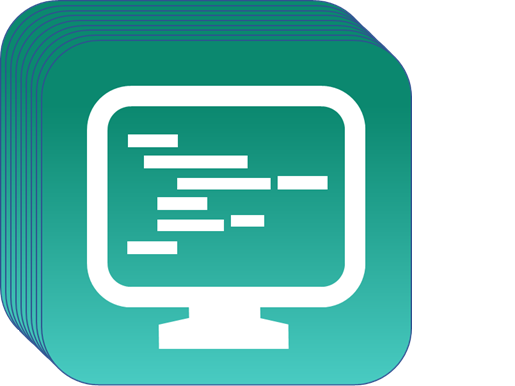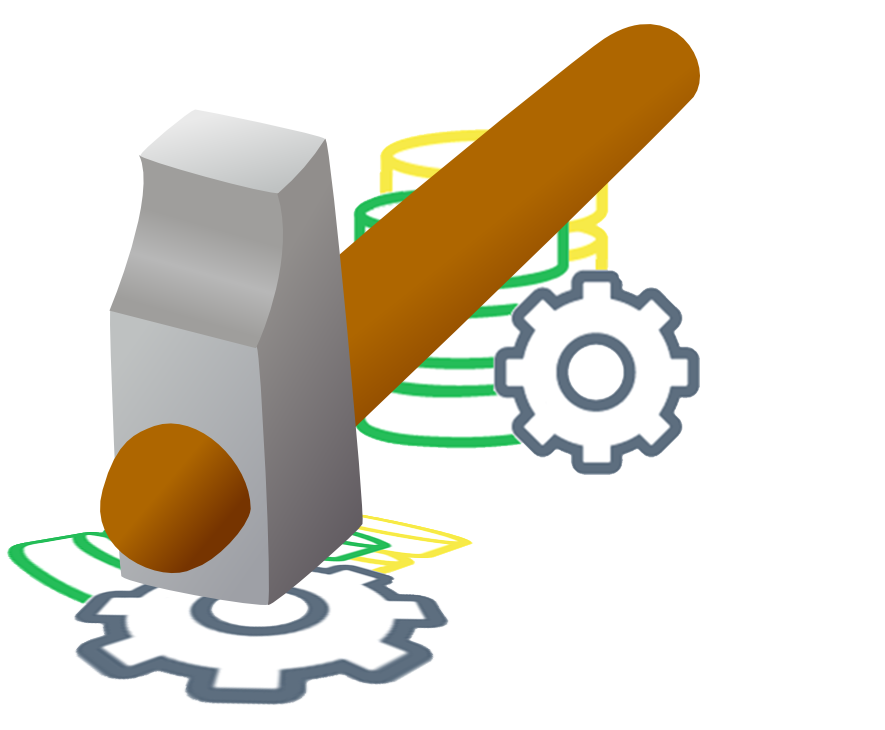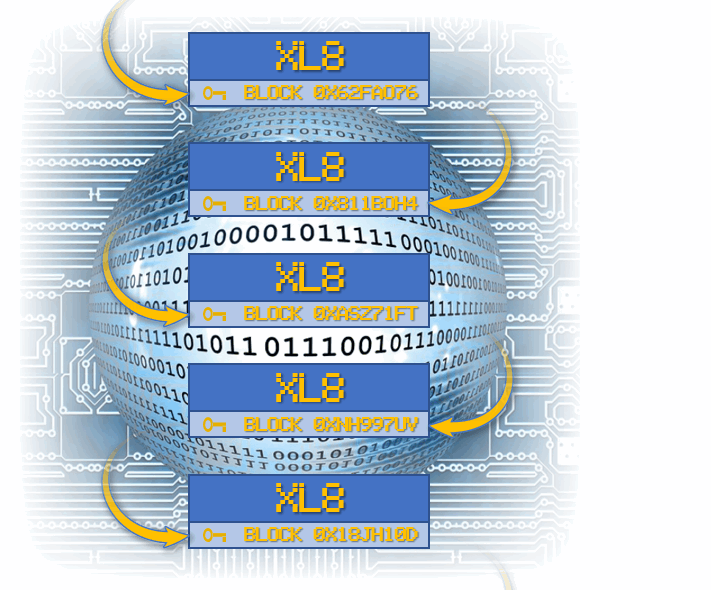 Once upon a time, of course, the translation environment was just black and white with gray in between. Black and white and gray? The AppStore gods were understandably bored and angry, so they went looking for other colours to brighten the world for their users. The resulting colours emerged from the Microsoft Word palette resulting in fifteen colours to choose from. The AppStore gods were so happy with these colours they decided to paint the translation environment from the AppStore. They opened Visual Studio and flung the colours around, resulting in a brand new app. they called “Wordlight” and a new colourful feature for the “Community Advanced Display Filter”.
Once upon a time, of course, the translation environment was just black and white with gray in between. Black and white and gray? The AppStore gods were understandably bored and angry, so they went looking for other colours to brighten the world for their users. The resulting colours emerged from the Microsoft Word palette resulting in fifteen colours to choose from. The AppStore gods were so happy with these colours they decided to paint the translation environment from the AppStore. They opened Visual Studio and flung the colours around, resulting in a brand new app. they called “Wordlight” and a new colourful feature for the “Community Advanced Display Filter”.
Category: Useful tools
Who’s up for a little bit of Passolo?
 I can remember being asked in early 2007 to organise a report on the benefits of Passolo compared to other tools that also supported visual software localization. In the same year, shortly after that, SDL purchased Pass Engineering and SDL Passolo was born. At the time I didn’t know a lot about Trados Workbench or SDLX either as I had a very different role, and I only started getting interested in the technology we (and our competitors) use in 2008 just prior to the release of SDL Trados Studio 2009 the following year. In all that time since then, until a few months ago, I’m ashamed to say I’ve never taken more than a cursory look at it. It’s taken a course I’m doing at the moment at the University of Strasbourg to really bring home the value. One of the modules on this course is “Localization of Graphical User Interfaces” and under some expert tutorage I’m plugging many of the gaps I have in my knowledge of this industry. I’m even putting it to good use in my daily work!
I can remember being asked in early 2007 to organise a report on the benefits of Passolo compared to other tools that also supported visual software localization. In the same year, shortly after that, SDL purchased Pass Engineering and SDL Passolo was born. At the time I didn’t know a lot about Trados Workbench or SDLX either as I had a very different role, and I only started getting interested in the technology we (and our competitors) use in 2008 just prior to the release of SDL Trados Studio 2009 the following year. In all that time since then, until a few months ago, I’m ashamed to say I’ve never taken more than a cursory look at it. It’s taken a course I’m doing at the moment at the University of Strasbourg to really bring home the value. One of the modules on this course is “Localization of Graphical User Interfaces” and under some expert tutorage I’m plugging many of the gaps I have in my knowledge of this industry. I’m even putting it to good use in my daily work!
Audio Visual Translation in Studio
 When I started to look at the subtitling industry little did I know just how fragmented it would be! For years we have talked about SRT and yet when I look at the filetypes that tools like Subtitle Edit claim to support I find over 200! Normally I’m not a big fan of standards but that’s probably because I live in a world where there is little variation and supporting different bilingual files is trivial in comparison. But if there was ever a good argument for one it would be here! Asking people what format they see most often does help to narrow it down, but as we often find when developing software, the interest usually comes after the event and not before! So what formats can a translation tool support today?
When I started to look at the subtitling industry little did I know just how fragmented it would be! For years we have talked about SRT and yet when I look at the filetypes that tools like Subtitle Edit claim to support I find over 200! Normally I’m not a big fan of standards but that’s probably because I live in a world where there is little variation and supporting different bilingual files is trivial in comparison. But if there was ever a good argument for one it would be here! Asking people what format they see most often does help to narrow it down, but as we often find when developing software, the interest usually comes after the event and not before! So what formats can a translation tool support today?
Apply a TM Template
 Ever since the release of Studio 2009 we have had the concept of Language Resource Templates, and ever since the release of Studio 2009 I’d risk a bet that most users don’t know what they’re for or how to use them. To be fair this is hardly a surprise since their use is actually quite limited out of the box and access to the goodies inside is pretty hard to get at. It’s been something I used to see users complain about a long time ago but for some years now I rarely see them mentioned anymore. This article, I hope, might change that.
Ever since the release of Studio 2009 we have had the concept of Language Resource Templates, and ever since the release of Studio 2009 I’d risk a bet that most users don’t know what they’re for or how to use them. To be fair this is hardly a surprise since their use is actually quite limited out of the box and access to the goodies inside is pretty hard to get at. It’s been something I used to see users complain about a long time ago but for some years now I rarely see them mentioned anymore. This article, I hope, might change that.
Hunspell dictionaries in Studio
 When I write these articles I always start with thinking about the image at the top. I do this for two reasons, the first is because it usually helps me think of some bizarre introduction (like this!) that helps me start writing, and the second is because every now and again I like to play around with Gimp which is the free image software I occassionally use. It’s always nice to spend a little time doing something frivolous because it’s good thinking time without being distracted by the job! I don’t really know how to use this software at all, but it’s fun seeing what turns out… and I confess I often use a combination of powerpoint and Gimp simply because some things are just easier in powerpoint! Eventually I might actually learn how to use it properly… I’ll keep practicing anyway.
When I write these articles I always start with thinking about the image at the top. I do this for two reasons, the first is because it usually helps me think of some bizarre introduction (like this!) that helps me start writing, and the second is because every now and again I like to play around with Gimp which is the free image software I occassionally use. It’s always nice to spend a little time doing something frivolous because it’s good thinking time without being distracted by the job! I don’t really know how to use this software at all, but it’s fun seeing what turns out… and I confess I often use a combination of powerpoint and Gimp simply because some things are just easier in powerpoint! Eventually I might actually learn how to use it properly… I’ll keep practicing anyway.
The translation blockchain?
 There are people who believe that the original intention of the internet during its inception in the 1980’s was to put the power of information in the hands of its users. In fact the last three or four decades has seen the return of the wild wild west with the internet, e-mail, mobile technology, social media, online shopping, big data, cloud computing and now the internet of things. All of this has been accessible to anyone, and anyone with the ability to create a website can give the impression they are far more trustworthy and capable than they actually are. The way the growth of the internet has taken place has meant that only large organisations are able, in theory, to provide “security” and “trust” and we rely on them to validate our financial transactions, willingly handing over our personal data so that we no longer have any control over what happens with it. Since the global social media phenomenon we even hand this data over to less secure environments sharing our lives with the world and in the process becoming less and less oblivious to the implications of what we share. Certainly a far cry from the original idea of a secure and private network for the users, and today individuals have next to zero control over their personal data at all.
There are people who believe that the original intention of the internet during its inception in the 1980’s was to put the power of information in the hands of its users. In fact the last three or four decades has seen the return of the wild wild west with the internet, e-mail, mobile technology, social media, online shopping, big data, cloud computing and now the internet of things. All of this has been accessible to anyone, and anyone with the ability to create a website can give the impression they are far more trustworthy and capable than they actually are. The way the growth of the internet has taken place has meant that only large organisations are able, in theory, to provide “security” and “trust” and we rely on them to validate our financial transactions, willingly handing over our personal data so that we no longer have any control over what happens with it. Since the global social media phenomenon we even hand this data over to less secure environments sharing our lives with the world and in the process becoming less and less oblivious to the implications of what we share. Certainly a far cry from the original idea of a secure and private network for the users, and today individuals have next to zero control over their personal data at all.
Upgrading apps in the SDLAppstore…
 Studio 2019 has arrived and it brings with it some nice features on the surface, and some important improvements under the hood… but it also brings with it a lot more upgrades than just Studio, and I don’t just mean MultiTerm! The SDL AppStore is one of the unique benefits you get when you work on the SDL technology stack and there are hundreds of apps available that can provide additional resources, custom filetypes, file converters, productivity enhancements, manuals, etc. When you upgrade your version of Studio you are also going to have to upgrade your apps. Many of the apps are maintained by the SDL Community team and these have all been upgraded ready for use in Studio 2019, but the majority have been created and maintained by others. I’ve written this article to explain what you need to look out for as a user of SDL Trados Studio or MultiTerm, and also as a reference guide for the developers who might have missed the important information that was sent out to help them with the process. Continue reading “Upgrading apps in the SDLAppstore…”
Studio 2019 has arrived and it brings with it some nice features on the surface, and some important improvements under the hood… but it also brings with it a lot more upgrades than just Studio, and I don’t just mean MultiTerm! The SDL AppStore is one of the unique benefits you get when you work on the SDL technology stack and there are hundreds of apps available that can provide additional resources, custom filetypes, file converters, productivity enhancements, manuals, etc. When you upgrade your version of Studio you are also going to have to upgrade your apps. Many of the apps are maintained by the SDL Community team and these have all been upgraded ready for use in Studio 2019, but the majority have been created and maintained by others. I’ve written this article to explain what you need to look out for as a user of SDL Trados Studio or MultiTerm, and also as a reference guide for the developers who might have missed the important information that was sent out to help them with the process. Continue reading “Upgrading apps in the SDLAppstore…”
It’s all about the money!
 It could be said that translators come into the industry for the love of language, and the creative nature of the work, writing beautiful translations that at least do justice to the original texts. It might even be true for many… but let’s face it, very few people can afford to do this for a full career without thinking about the money! So it’s all the more surprising to me that translation vendors don’t provide a mechanism for dealing with the money in their toolsets. Sure, you can have an analysis that can be used as the basis of a quote or an invoice, but you don’t see anywhere that deals with the money! The larger Translation Management Systems have features for doing this, or they integrate with larger Enterprise systems for accounting and project management, but what about the translators? How do they manage their business?
It could be said that translators come into the industry for the love of language, and the creative nature of the work, writing beautiful translations that at least do justice to the original texts. It might even be true for many… but let’s face it, very few people can afford to do this for a full career without thinking about the money! So it’s all the more surprising to me that translation vendors don’t provide a mechanism for dealing with the money in their toolsets. Sure, you can have an analysis that can be used as the basis of a quote or an invoice, but you don’t see anywhere that deals with the money! The larger Translation Management Systems have features for doing this, or they integrate with larger Enterprise systems for accounting and project management, but what about the translators? How do they manage their business?
Well… there are applications on the SDL AppStore that can help with this in some ways. For example:
- SDL InQuote – an interesting, sometimes problematic application, that can allow you to create quotes and invoices based on the analysis files in your Studio projects
- Post-Edit Compare – a wonderful application that in addition to carrying out a post-edit analysis of the work you are doing can put a value to it based on your rates. But it doesn’t create quotes or invoices.
- Qualitivity – another wonderful application that in addition to tracking just about everything you do in Studio can put a value to it based on the post-edit analysis or on a time basis. But it doesn’t create quotes or invoices either.
Data Protection…
 There’s always been the occasional question appearing on the forums about data protection, particularly in relation to the use of machine translation, but as of the 25th May 2018 this topic has a more serious implication for anyone dealing with data in Europe. I’ve no intention of making this post about the GDPR regulations which come into force in May 2016 and now apply, you’ll have plenty of informed resources for this and probably plenty of opinion in less informed places too, but just in case you don’t know where to find reliable information on this here’s a few places to get you started:
There’s always been the occasional question appearing on the forums about data protection, particularly in relation to the use of machine translation, but as of the 25th May 2018 this topic has a more serious implication for anyone dealing with data in Europe. I’ve no intention of making this post about the GDPR regulations which come into force in May 2016 and now apply, you’ll have plenty of informed resources for this and probably plenty of opinion in less informed places too, but just in case you don’t know where to find reliable information on this here’s a few places to get you started:
- Data Protection in the EU
- CNIL (Commission nationale de l’informatique et des libertés)
With the exception of working under specific requirements from your client, Europe has (as far as I’m aware) set out the only legal requirements for dealing with personal data. They are comprehensive however and deciphering what this means for you as a translator, project manager or client in the translation supply chain is going to lead to many discussions around what you do, and don’t have to do, in order to ensure compliance. I do have faith in an excellent publication from SDL on this subject since I’m aware of the work that gone into it, so you can do worse than to look at this for a good understanding of what the new regulations mean for you.
A competitive edge…
 I’m pretty sure that when we started to build the new Customer Experience Team in Cluj last year that there was nothing in the job description about being competitive… but wow, they are!!! I’d be lying if I said I wasn’t competitive, because I know I am, but it’s been a long time since I’ve had these kinds of feelings that keep me up at night.
I’m pretty sure that when we started to build the new Customer Experience Team in Cluj last year that there was nothing in the job description about being competitive… but wow, they are!!! I’d be lying if I said I wasn’t competitive, because I know I am, but it’s been a long time since I’ve had these kinds of feelings that keep me up at night.
To some extent I think the training requirements at SDL are the perfect fuel for this type of environment and I haven’t made up my mind yet whether it’s healthy or not. But in their roles the team speak with customers through the online chat, in the community, via email… basically anywhere anyone comes in with a question because they don’t have a support contract or an account manager to ask and they didn’t know about the SDL Community which is of course the best place to go for help. To be able to answer the variety of technical questions we see, all the team have either completed or are working through the various SDL Certifications available at a rate of knots and are learning more about the sort of problems faced by translators and project managers just by having to help people every day. They are doing a fantastic job!
